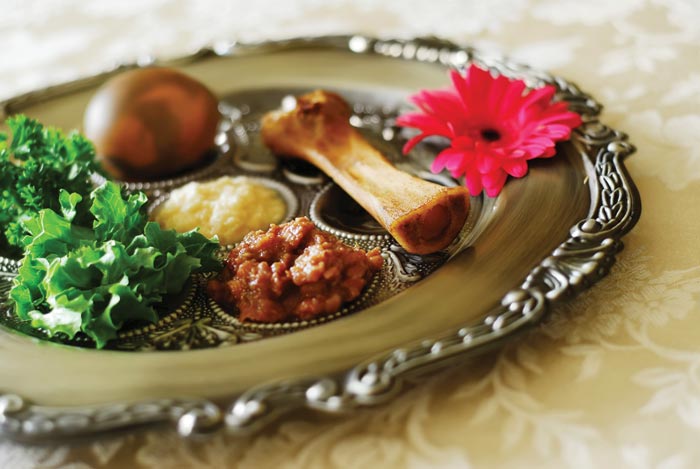Chicago and Cleveland have the best corned beef. Detroit is tops for rye bread. The best smoked meat is in Montreal, and for pastrami, you can’t touch New York and L.A.
When it comes to Jewish delicatessen, 30-year-old David Sax is the go-to guy. A longtime deli aficionado, the annoyingly trim Sax spent three years eating his way through more than 150 Jewish delis to research “Save the Deli: In Search of Perfect Pastrami, Crusty Rye and the Heart of Jewish Delicatessen,” a wistful, riotously funny paean to this quintessential slice of American Jewish history.
The book, which will be published in October by Houghton Miflin Harcourt, is a delicious romp through a fast-disappearing world.
In 1931, Sax reports, there were 2,000 delis in New York City, three-quarters of them kosher. Today, Sax says, his research turns up 25 Jewish delis in the city, two-thirds of which are kosher. A similar pattern has followed across North America, with city after city sounding the death knell for its last traditional deli. Sax guesses there are just a few hundred left worldwide, most of them in the United States.
“The Jewish deli is dying,” Sax told JTA. “Each time I hear a deli closes, something inside me dies.”
German immigrants brought the deli to New York in the 1820s, Sax reports. By the 1870s and ‘80s, German Jews had made their own, kosher modifications to the traditional treif recipes: schmaltz, or rendered chicken fat, instead of lard; ptcha, or jellied calves’ feet, instead of pig trotters. The origins of the first pastrami sandwich is shrouded in mystery, although writer Patricia Volk told Sax her great-grandfather was the first to slap pastrami between two slices of rye bread at his kosher butcher shop in New York in the late 1880s.
Sax chronicles the rise and decline of the “kosher-style” deli, an American innovation that originally differed from its kosher counterpart mainly in hours of operation (they did not close on the Sabbath) and lack of rabbinical supervision. Reaching its heyday in the 1950s and ‘60s, the kosher-style deli eventually succumbed to economic pressure and popular tastes and began putting cheese on turkey sandwiches, offering milk with coffee and using non-kosher meats. From there, it was an easy hop to serving bacon with French toast. Today few such delis use the term “kosher style,” preferring to call themselves Jewish or New York delis.
Sax bemoans the rise of glatt kosher a stricter standard for kosher meat that demands round-the-clock oversight by a mashgiach, or kosher supervisor. He says it puts financial demands on deli owners that most cannot meet. That’s why most new delis are not kosher, he claims—it’s just too expensive.
“There’s a lot of money in hechsher,” he says, using the Hebrew for kosher certification. “It’s a turf war that uses religion as leverage.”
But most of this book is about food, the gloriously fatty, heart-stopping Ashkenazi cuisine that is the signature of the Jewish deli: braised brisket in wine sauce; pickled tongue; cabbage rolls in sweet-and-sour tomato; matjes herring; and, of course, the litany of “k’s,” the knishes, kreplach, kugel and kvetching.
He saves his highest praise for the deli meats: corned beef pickled and boiled in vats of brine; pastrami, lovingly rubbed with secret spice mixtures, then smoked and steamed to perfection. The way to suss out a good deli, he says, is to order the matzah ball soup and whatever deli meat the city specializes in, be it corned beef, tongue, pastrami or smoked beef, a softer, gentler Canadian variant.
Although delicatessen originated in Europe, American Jews put their own stamp on it. Pastramia, for example, was in its native Romania a method of preparing any meat or poultry, and was in fact originally used most often for duck or goose. In the United States, Romanian Jews applied the same technique to beef, which began pouring in from the great Western plains and was much cheaper than game poultry.
“The Jewish deli is rooted in the flavors of the Old World,” Sax says. “Some things are the same, like the chopped liver, the chicken soup. Others are amalgamations, like the sandwich, an American thing that the Jewish delis appropriated.”
A big part of Sax’s mission is to encourage young Jews to take over delis at risk of closing or open new ones, a goal that might seem counterintuitive in today’s economic climate. But he insists the market for deli food is there, as a new generation looks back nostalgically to a cuisine that represents an earlier, simpler, more comforting era.
“People aren’t really looking for innovation in deli,” he insists. “The best things I see in the new delis are a return to tradition.” His favorite new Jewish delis are taking advantage of the organic, do-it-yourself movement that is influencing the country’s restaurant scene. “It’s ‘innovative’ today to pickle your own meat or make your own kishke.”
In his effort to give props to these newcomers, Sax glosses over the sad but very real possibility that the Jewish deli may not survive outside a few key cities. New York’s deli scene has imploded, he says, and new delis in Portland, Ore. and Boulder, Colo., may be just flashes in the matzah brie pan.
His hopes for the San Francisco Bay Area seem particularly Pollyannaish. Two of the four Jewish delis he describes in his book have closed since he visited them, and of the remaining two, only Saul’s Deli in Berkeley rates as a real destination; David’s on Geary St., near San Francisco’s Union Square, is a dilapidated version of its former self.
Two delis to serve a region with more than 350,000 Jews? It’s a shanda.




















 More news and opinions than at a Shabbat dinner, right in your inbox.
More news and opinions than at a Shabbat dinner, right in your inbox.